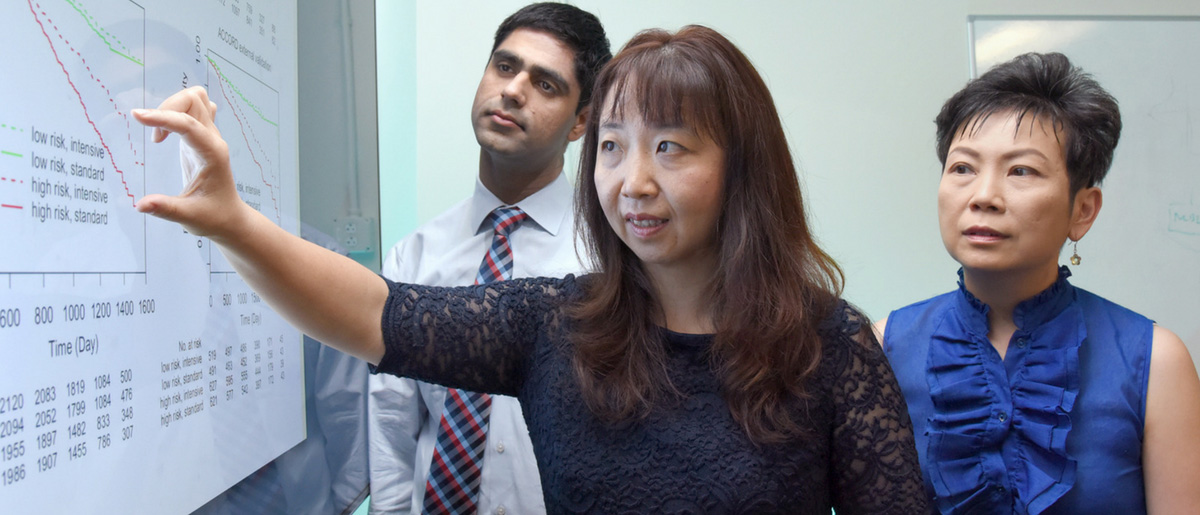Using data to advance care
Algorithm identifies those hypertensive patients who would benefit most from intensive treatment

Using data from large clinical trials, UT Southwestern researchers developed a way to predict which patients will benefit most from aggressive high blood pressure treatment.
The machine learning algorithm they devised combines three variables routinely collected during clinic visits and demonstrates how the emerging field of bioinformatics could transform patient care. Their work, published in the American Journal of Cardiology, describes a risk prediction model in which patient age, urinary albumin/creatinine ratio (UACR), and cardiovascular disease history successfully identified hypertensive patients for whom the benefits of intensive therapy outweigh the risks.
“To the best of our knowledge, this is the first study to identify a subgroup of patients who derive a higher net benefit from intensive blood pressure treatment,” said corresponding author Dr. Yang Xie, Director of the Quantitative Biomedical Research Center at UT Southwestern and of the University’s Bioinformatics Core Facility.
Researchers used patient data from two National Institutes of Health-funded randomized controlled trials that tested intensive vs. standard blood pressure-lowering treatments – the Systolic Blood Pressure Intervention Trial (SPRINT) and the Action to Control Cardiovascular Risk in Diabetes (ACCORD) trial.
“I think our algorithm can help us identify high-risk patients who will most likely benefit from intensive blood pressure reduction. Long-term intensive HBP drug therapy can reduce risk of heart failure and death, but it carries an increased risk of side effects,” said co-author Dr. Wanpen Vongpatanasin, Professor of Internal Medicine.
The researchers’ machine learning method determined three simple criteria to identify adults with high blood pressure who are at the highest risk for early major adverse cardiovascular events – such as cardiovascular death, heart attack, or stroke. Those criteria are an age of 74 or older, a UACR of 34 or higher, and a history of clinical cardiovascular disease, such as heart disease, stroke, or heart failure. Patients who met one or more of the three criteria were predicted to be among a high-risk group who had a greater benefit from intensive blood pressure-lowering treatment. In contrast, the team found that patients younger than age 74 who had a UACR less than 34 and no history of cardiovascular disease may do equally as well with less intensive treatment.
“We hope that clinicians can someday use this algorithm to identify which patients should receive standard versus intensive treatment, and we hope to design a prospective clinical trial to further validate this algorithm,” said Dr. Xie, who is also an Associate Professor of Clinical Sciences and Bioinformatics.
Study lead authors are Shidan Wang, a graduate student researcher, and Dr. Rohan Khera, a cardiology research fellow. The study received support from the National Institutes of Health.
Dr. Vongpatanasin holds the Norman and Audrey Kaplan Chair in Hypertension and the Fredric L. Coe Professorship in Nephrolithiasis Research in Mineral Metabolism.

